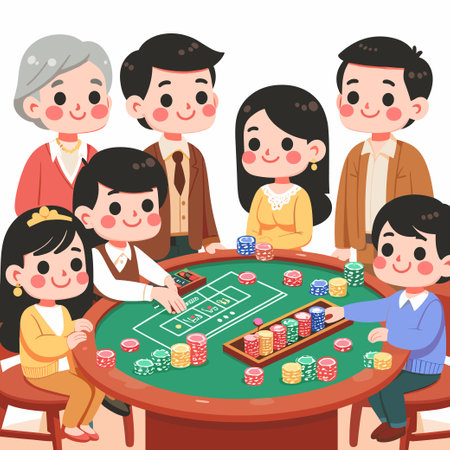1. Understanding Clutter and Its Effect on Family Energy
Clutter is a familiar sight in many UK family homes, whether it’s the ever-growing pile of shoes by the front door, school bags scattered across the hallway, or forgotten toys tucked under the sofa. In British households, clutter often builds up gradually, almost unnoticed, until it starts to impact daily life. The term “clutter” in this context refers not just to mess, but to an accumulation of items that no longer serve a purpose or bring joy—think unused kitchen gadgets, outgrown clothes, or stacks of old magazines. This build-up can subtly affect the overall energy and atmosphere of a home. For families, especially those with children and teenagers, excess clutter can dampen the mood, create unnecessary stress, and even hinder productivity. It can make communal spaces less inviting and foster a sense of chaos rather than calm. British family life thrives on comfort and togetherness, yet clutter can disrupt these values by making it harder for everyone to relax or find what they need. Moreover, the physical presence of clutter can impact energy flow within a household—blocking natural movement through rooms and sometimes leading to friction among family members. Recognising the influence clutter has on both emotional well-being and practical day-to-day living is the first step towards creating a more harmonious and energised family home.
2. Cultural Perspectives on Tidiness in the UK
The British approach to household tidiness is often shaped by a blend of tradition, practicality, and evolving social norms. Historically, the concept of “an Englishman’s home is his castle” has underscored the importance of personal space and order within the family home. This cultural sentiment continues to influence attitudes towards organisation and clutter today, particularly in family settings.
Many British families value tidiness as a sign of respectability and good manners. Phrases like “keep things neat and tidy” are commonly heard in homes, schools, and even television programmes. However, there is also a recognition that homes should be lived-in rather than perfect. The balance between comfort and cleanliness is key, with an emphasis on making spaces welcoming without being overly pristine.
Children and teenagers often absorb these values through observation and gentle encouragement from parents or guardians. The ways British adults talk about chores—using words like “having a tidy-up,” “giving it a quick once-over,” or “sorting out”—reflect a pragmatic approach rather than one rooted in strict discipline. Attitudes can differ regionally and between households, but there is generally a shared understanding that everyone should contribute to maintaining order, especially in communal family areas.
| Attitude | Description | Influence on Children & Teens |
|---|---|---|
| Respect for Personal Space | Emphasis on privacy and ownership of individual rooms or belongings | Encourages responsibility for personal clutter; children learn boundaries |
| Practical Organisation | Focus on functionality over appearance; storage solutions are valued | Promotes problem-solving skills; teens may adopt creative storage ideas |
| Sociable Spaces | Keeping common areas presentable for guests and family gatherings | Younger family members help prepare for visitors; links tidiness with hospitality |
| Lived-in Comfort | Acknowledgement that some mess is natural in busy households | Reduces pressure for perfection; fosters realistic expectations around clutter clearing tasks |
These cultural perspectives do not just inform parental expectations but also shape how children and teenagers perceive their roles within the home. A sense of shared responsibility often emerges, with each family member contributing according to their age and ability. Over time, this collective approach helps young people understand that clutter clearing is not merely a chore but an important part of creating a positive energy within the household.

3. Getting Kids Involved: Age-Appropriate Approaches
Engaging children and teenagers in decluttering activities within UK family homes requires a thoughtful, age-sensitive approach. By tailoring strategies to suit different age groups, parents can foster responsibility, teamwork, and a positive attitude towards maintaining a harmonious living space.
Primary School Pupils: Making it Fun and Manageable
Younger children are naturally curious and often respond well to playful tasks. To encourage their participation, break down decluttering into small, manageable steps. Turn sorting through toys or books into a game — for example, “Who can find the most items they no longer use?” Use colourful bins or boxes and let them decorate labels. Offer praise or small rewards, such as stickers or extra story time, to reinforce their efforts. Keep sessions short—ten to fifteen minutes is usually sufficient for this age group.
Key Stage 2 & Early Secondary: Building Skills and Ownership
For older primary and early secondary pupils, introduce more responsibility by involving them in decision-making. Allow them to choose which areas of their room or shared spaces need attention. Encourage them to reflect on what they use regularly versus what can be donated or recycled. Provide gentle guidance rather than strict instructions, helping them develop organisational skills and a sense of ownership over their environment. Consider involving them in charity collections or local jumble sales to give decluttering a community-minded purpose.
Teenagers: Encouraging Independence and Reflection
Teens value autonomy and are more likely to engage if they see personal benefit. Frame decluttering as a way to create a more relaxing or inspiring space for studying or socialising with friends. Respect their privacy by allowing them control over their own rooms or belongings but offer help when needed. Introduce digital decluttering—organising school files, apps, or photos—to make the process relevant to their everyday lives. Discussions about sustainability and mindful consumption can also resonate with older teens who are forming their own values.
Family Collaboration: Setting an Example
Regardless of age, children are observant and model their behaviour on adults. Make decluttering a family affair by tackling communal spaces together—such as the hallway shoe rack or kitchen drawers—and sharing stories about why certain things are kept or passed on. This collaborative spirit helps build lifelong habits and strengthens family bonds, making clutter clearing a positive part of home life in the UK.
4. Making Clutter Clearing Fun and Inclusive
Turning clutter clearing into a positive, shared activity is key to engaging children and teens in British family homes. Rather than making it a chore, reframing the process as an opportunity for fun, creativity, and teamwork can encourage participation and even strengthen family bonds. Here are some practical approaches tailored to UK family dynamics.
Creative Methods for All Ages
Encourage self-expression by allowing children and teens to personalise their space as they declutter. For younger children, provide colourful storage boxes or stickers so they can decorate and organise at the same time. For teenagers, challenge them to create mood boards or inspiration collages using magazines and old photos found during the clear-out.
Family Games That Work
Games inject energy and friendly competition into the process. Below is a table of simple games suitable for UK families:
| Game Name | Description | Ideal Age Group |
|---|---|---|
| The 10-Minute Dash | Set a timer for 10 minutes; each person clears as much clutter as possible from their chosen area. | All ages |
| Clutter Bingo | Create bingo cards with common items (e.g., books, socks, toys); the first to complete a row wins a treat. | Younger children |
| Sort & Swap Challenge | Teens sort through belongings and swap unwanted items among siblings or friends before donating leftovers. | Teens |
| Themed Clear-Outs | Pick a theme (e.g., Winter Warmers or Back to School) and focus on related items to keep things fresh. | All ages |
Inclusive Incentives That Motivate
Motivation can be boosted with incentives that are meaningful within British households. Consider these options:
- Treat Jar: Each time someone completes a task, add a token to a jar; when full, enjoy a family outing or favourite pudding together.
- Pocket Money Boost: Offer small rewards or extra pocket money for active participation, agreed upon in advance during a family meeting.
- Choose the Movie Night: The most enthusiastic helper picks the film for Friday’s family movie night—always popular in UK homes.
- Charity Donations: Involve everyone in choosing which local charity shop will receive your donations, connecting the act of clearing out to community values.
Cultural Considerations for UK Families
British families often appreciate humour and gentle encouragement over rigid instructions. Use playful language, perhaps inventing silly nicknames for cluttered zones (like “The Bermuda Triangle” for that mysterious corner where odd socks appear). Foster inclusivity by letting each family member suggest methods or games—this democratic approach respects every voice and increases engagement.
5. Sustaining Momentum and Building Good Habits
Establishing a clutter-free family home in the UK is not just about a one-off clear-out; it’s about nurturing ongoing habits that fit seamlessly into daily life. To keep children and teens motivated, it’s wise to integrate organisation routines with familiar patterns—like the school timetable. For example, encourage everyone to set aside ten minutes after school or before dinner for tidying up their rooms or shared spaces. This regular slot becomes part of the day, making clutter clearing less of a chore and more of a habit.
Adapting to Seasons and Schedules
The British climate and academic year offer natural opportunities to review household belongings. Use seasonal changes—such as the switch from winter to summer uniforms or the start of a new term—to prompt sorting sessions. Ask children to pack away clothes and sports gear they’ve outgrown or no longer need. This can become an annual tradition: for instance, a spring clean at Easter or a wardrobe refresh in September before school resumes.
Engaging with Local Community Initiatives
Charity shops are a cornerstone of many UK communities, and donating unwanted items gives clutter clearing extra meaning. Involve your children and teens in choosing where their donations go—perhaps supporting local hospice shops or fundraising for schools. Explain how their contributions help others, fostering empathy and social responsibility alongside organisational skills.
Making Organisation Rewarding
Celebrate progress with small rewards: perhaps a family movie night after a successful clear-out, or letting your teen redecorate their tidy space. Visual reminders—like charts on the fridge—can track achievements and reinforce routines. Over time, these practical steps ensure that good habits take root, helping every member of the household enjoy a lighter, more energised home environment.
6. Addressing Common Challenges and Setbacks
Even the best-laid plans for decluttering in British family homes can run into roadblocks. Understanding and addressing these challenges with empathy and practicality is vital for success.
Resistance to Change
Many children and teens may initially resist letting go of their possessions, especially those tied to memories or comfort. It’s important to acknowledge that this reluctance is normal. Try to open a gentle conversation about why clearing space can lead to a more enjoyable home environment, rather than forcing decisions. Setting an example by decluttering your own belongings first often encourages younger family members to follow suit.
Time Constraints and Busy Schedules
British families often juggle hectic routines with school runs, after-school clubs, and work commitments. Instead of trying to tackle the entire house in one go, break the process down into manageable chunks—perhaps focusing on just one room or even a single drawer per weekend. This approach not only reduces overwhelm but also creates small wins that build momentum over time.
Navigating Differing Opinions
It’s common for parents and children to have different ideas about what should stay or go. Establishing ground rules together at the outset—such as a “one-in, one-out” policy for toys or clothes—can help set clear expectations and minimise arguments. Remember, compromise is key; sometimes allowing children to keep a few cherished items can make them more willing to part with others.
Sentimental Attachments
Items like school projects, holiday souvenirs, or old football kits often hold deep sentimental value. Instead of insisting these be thrown away, consider alternative solutions such as photographing items before recycling them or designating a special memory box for each child. This preserves the emotional connection while still reducing physical clutter.
Dealing with Setbacks
If progress stalls or old habits return, avoid blame or frustration. Instead, revisit your shared goals as a family—perhaps creating a visual reminder like a progress chart on the fridge—and celebrate every small achievement together. Decluttering is an ongoing journey rather than a one-off event, and persistence pays off in fostering both tidier spaces and closer family bonds within UK homes.


